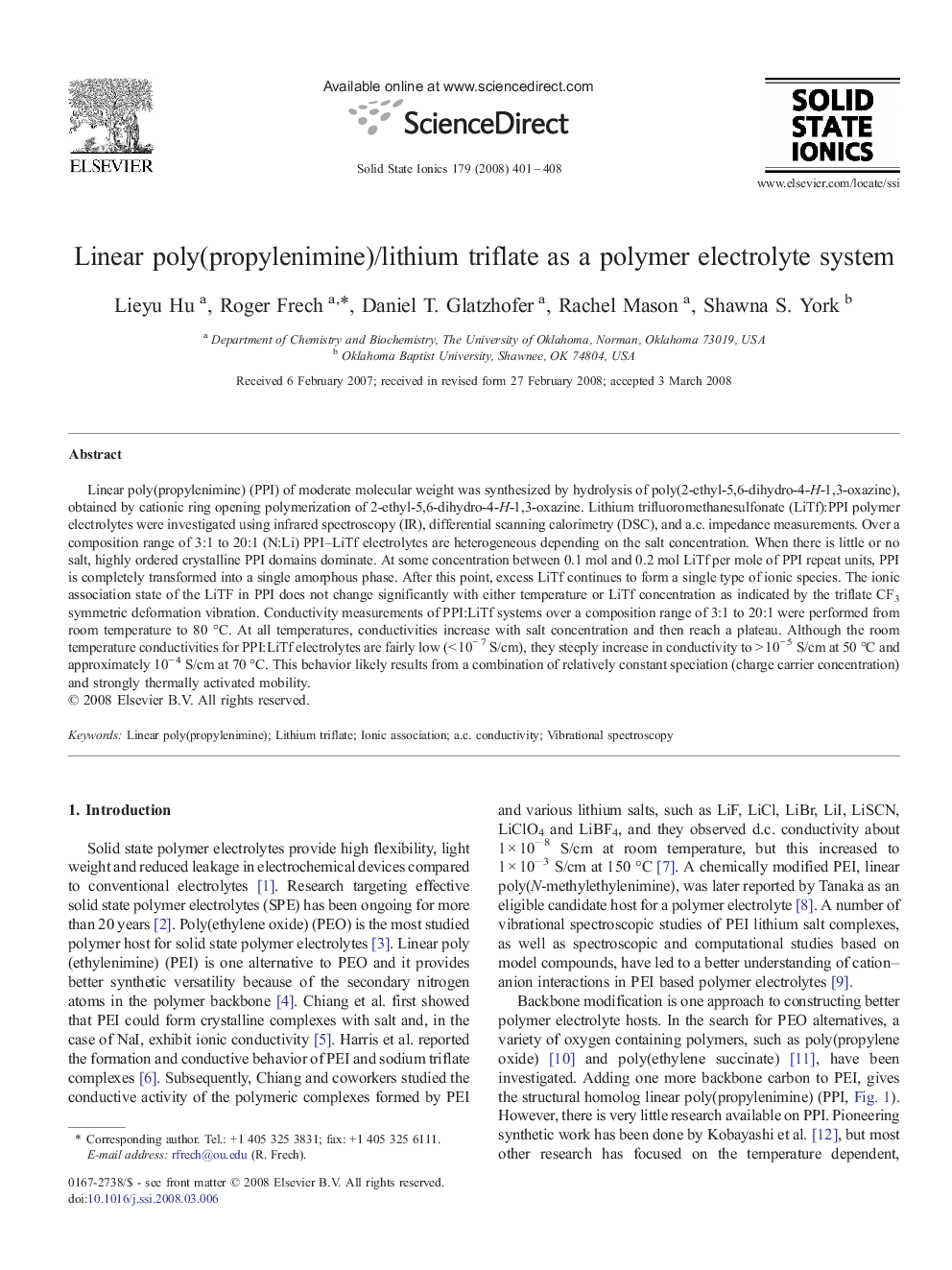| Article ID | Journal | Published Year | Pages | File Type |
|---|---|---|---|---|
| 1295254 | Solid State Ionics | 2008 | 8 Pages |
Linear poly(propylenimine) (PPI) of moderate molecular weight was synthesized by hydrolysis of poly(2-ethyl-5,6-dihydro-4-H-1,3-oxazine), obtained by cationic ring opening polymerization of 2-ethyl-5,6-dihydro-4-H-1,3-oxazine. Lithium trifluoromethanesulfonate (LiTf):PPI polymer electrolytes were investigated using infrared spectroscopy (IR), differential scanning calorimetry (DSC), and a.c. impedance measurements. Over a composition range of 3:1 to 20:1 (N:Li) PPI–LiTf electrolytes are heterogeneous depending on the salt concentration. When there is little or no salt, highly ordered crystalline PPI domains dominate. At some concentration between 0.1 mol and 0.2 mol LiTf per mole of PPI repeat units, PPI is completely transformed into a single amorphous phase. After this point, excess LiTf continues to form a single type of ionic species. The ionic association state of the LiTF in PPI does not change significantly with either temperature or LiTf concentration as indicated by the triflate CF3 symmetric deformation vibration. Conductivity measurements of PPI:LiTf systems over a composition range of 3:1 to 20:1 were performed from room temperature to 80 °C. At all temperatures, conductivities increase with salt concentration and then reach a plateau. Although the room temperature conductivities for PPI:LiTf electrolytes are fairly low (< 10− 7 S/cm), they steeply increase in conductivity to > 10− 5 S/cm at 50 °C and approximately 10− 4 S/cm at 70 °C. This behavior likely results from a combination of relatively constant speciation (charge carrier concentration) and strongly thermally activated mobility.
